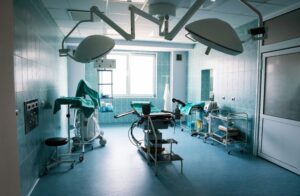Transforming Emergency Care: Advances in Emergency Room Technology


Emergency rooms (ERs) have always been the frontline of acute medical care, addressing many urgent health issues. As medical technology and practices evolve, so too does the way emergency care is delivered. Recent advancements in emergency room technology are enhancing the efficiency of ER operations and significantly improving patient outcomes. This article explores the key advancements shaping the future of emergency care and their impact on patient safety and treatment efficacy.
Emergency Room Advancements
In recent years, the landscape of emergency care has transformed dramatically thanks to technological innovations and improved practices. These advancements streamline operations, enhance diagnostic accuracy, and deliver more effective treatments. Here’s a look at some of the most significant advancements in emergency room technology.
Telemedicine Integration
One of the most notable advancements in emergency care is the integration of telemedicine. Telemedicine allows emergency departments to connect with specialists remotely, providing immediate expert consultations previously unavailable in many ER settings. This technology facilitates quick decision-making and expert input on complex cases, which can be crucial for conditions requiring specialized knowledge or treatment.
Telemedicine is especially beneficial in rural or underserved areas where specialist availability might be limited. By telemedicine, ERs can ensure patients receive high-quality care regardless of location. This innovation enhances patient care and optimizes medical resources by allowing specialists to assist multiple locations without being physically present.
Advanced Imaging Emergency Room Technologies
Imaging technology has seen remarkable advancements, with new systems providing faster and more accurate diagnostic capabilities. Modern ERs now employ high-resolution CT scans, portable ultrasound machines, and digital X-rays that deliver clearer images in less time. These imaging technologies are crucial in diagnosing conditions such as internal injuries, strokes, and fractures quickly, which can be vital for effective emergency treatment.
For instance, the development of portable ultrasound machines allows for rapid bedside imaging, reducing the need for patients to be moved and minimizing delays in diagnosis and treatment. These advanced imaging tools enable ER staff to make more informed decisions quickly, enhancing the overall efficiency of emergency care.
Electronic Health Records (EHRs)
Adopting electronic health records (EHRs) in emergency departments has revolutionized patient information management. EHRs provide a comprehensive, real-time view of a patient’s medical history, including previous treatments, allergies, and test results. This information is crucial for making accurate and timely decisions in an emergency setting.
EHR systems are integrated with various other technologies, such as diagnostic tools and medication management systems, ensuring that all relevant information is accessible to ER staff. This integration reduces the risk of medical errors, improves communication among healthcare providers, and enhances patient safety.
Automated Medication Dispensing
Automated medication dispensing systems are another significant advancement in emergency care. These systems streamline the process of medication administration by automating the dispensing and verification of drugs. This technology helps reduce medication errors, ensures the correct dosages are administered, and speeds up the delivery of medications to patients.
In emergency settings where time is of the essence, automated medication dispensing systems ensure that patients receive the appropriate medications quickly and accurately. These systems also maintain detailed medication administration records, which are essential for monitoring patient responses and ensuring compliance with treatment protocols.
Improved Patient Tracking Systems
Efficient patient tracking is crucial in emergency departments, where managing the flow of patients and their care can be challenging. Modern ERs utilize advanced tracking systems to monitor patient status, wait times, and treatment progress. These systems provide real-time updates to ER staff, helping them prioritize care based on the severity of patients’ conditions.
Patient tracking systems also enhance communication within the ER by providing staff with up-to-date information on patient locations and treatment stages. This improvement in coordination helps reduce delays, improve patient flow, and ultimately contribute to better outcomes.
Enhanced Data Analytics
Data analytics is critical in improving emergency care by providing insights into patient outcomes, operational efficiency, and resource utilization. ERs increasingly use data analytics tools to analyze patterns, identify areas for improvement, and optimize processes. This data-driven approach allows for more informed decision-making and helps ERs implement evidence-based practices.
For example, analyzing data on patient wait times and treatment outcomes can help identify bottlenecks in the emergency care process and guide the development of strategies to address them. Enhanced data analytics contribute to the continuous improvement of emergency care practices and the overall quality of patient care.
The advancements in emergency room technology represent a significant leap forward in emergency care. These innovations transform how emergency departments operate and deliver care, from telemedicine integration to advanced imaging and automated systems. As technology evolves, ERs will likely see even more improvements that enhance patient safety, streamline operations, and ultimately lead to better health outcomes.
Integrating these advanced technologies into emergency care practices demonstrates a commitment to providing the best possible care for patients in critical situations. By staying at the forefront of these advancements, emergency departments can continue to improve their capabilities and ensure they are well-equipped to handle the challenges of modern emergency medicine.
